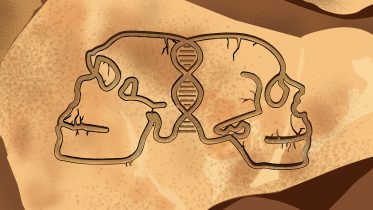
www.theamericanconservative.com
Tears, Prayers, and Resolve From the Scene of the Attempted Trump Assassination
Politics
Tears, Prayers, and Resolve From the Scene of the Attempted Trump Assassination
“He raised his fist and wants all of us to be strong, okay?”
Chaos in Butler, Pennsylvania. But not immediately. A pop, then the former President Donald Trump winces while looking to his right and reaching for his ear. Two more pops follow. Slightly behind Trump on the former president’s left, water seems to spray from a hydraulic lift. A flash from the muzzle of one of the snipers posted behind Trump and a chorus of screams prompted terrified onlookers to follow the former president’s lead and drop to the ground.
Another round of several overlapping pops rang out as more Secret Service agents dogpiled Trump. The next minute drags on for an eternity. The rally microphone picks up shouts between secret service members atop Trump: “Hold!” “On you!” “We ready?” “Shooter’s down!” “We’re clear!” The troop lifts the former president in the air, tightly surrounding him.
In duck and cover, the crowd waited for signs of life from the former president. The microphone then picks up what is arguably the most recognizable intonation in the world. “Let me get my shoes!” Trump commands four times. The right side of his face has two streaks of blood from ear to mouth. “Wait!” Trump says before the mic goes silent. Trump raises an indignant fist. Through a warrior’s scowl, he yells “fight!” three times. Rally goers leap up from their cover, raise their fists and unleash a torrent of howls that slide into a familiar Trump rally chant: “USA! USA! USA!”
Trump is whisked away.
With little cell service, the crowd is sure of the president’s will to fight, but unsure of Trump’s actual health. Tearful men, women, and children rub their eyes in disbelief. Most of the attendees passing by on their way to the exits had been waiting since the grounds opened at 1 p.m. to see the president speak. Trump had been speaking for less than 15 minutes before the shots rang out.
Ron Moose was one of those attendees. At well over six feet, and a few feet in front of me, Ron told The American Conservative, “The Secret Service all jumped. We’re talking within seconds they were all protecting [Trump].” Moose told TAC he had watched the snipers take aim and shoot at a building to the right of Trump beyond the grounds.
“We’re all so hopeful because Trump put his fist up. I mean, we’re hopeful. I’m hopeful he’s okay.”
By raising his fist, Trump “did two things,” in Moose’s calculation. “He said, ‘I’m okay,’ and ‘I’m here for the duration of the fight.’”
The crowd “went semi-wild,” Moose said.
One of the “Front Row Joes,” a group of men that can be spotted in the front of almost any Trump rally and have built a following of their own, told TAC what he saw.
“When he got up he had blood coming out of his ear,” the man, who wished to remain anonymous, said. When asked if he knew in the moment what was happening, the man said, “Yeah. I registered what was happening.”
“It’s just like a family member,” he said, choking up, “I don’t know how to explain it.”
“It don’t matter if you’re a Republican, Democrat, whatever. We don’t wish this on anybody. I don’t wish this on Joe Biden,” he concluded.
“I just can’t believe this happened,” Linda, 53, told TAC. “But, at the same time, with everything [Trump] is going through, you kind of can.” Linda said those two minutes “took years off my life”: “I was so scared, so afraid for Trump and for me and for everyone here. Then I was about to explode with joy when Trump got up and shook his fist.” Then reality set in. “My heart was pounding… I just cried. I just stayed down and cried.”
“When we did start to move, I knew I wasn’t alone,” Linda went on. “People were crying and hugging and praying. Trump and everybody gave everybody else strength to safely move along. That’s what people, the media, don’t understand about Trump and Trump supporters. We’re all a family, and we all look out after each other.”
Towards the exits, a mother finds her pre-teen looking son with a chiseled police officer. “My baby!” she yells as she engulfs her son in a hug. “Are you okay?” she asks, looking her son up and down for any bumps and bruises.
“I’m okay,” the tearful boy says. “Is he going to be okay?”
“I think so,” the mother replies. “He raised his fist and wants all of us to be strong, okay?”
Past where the security gates once were is about a quarter mile of knock-off Trump merch booths. Groups of Trump supporters, still drenched in salty sweat and tears, hugged and prayed. Others huddled next to a radio playing from one of the booths, awaiting Dan Bongino’s confirmation that the president was alive and well.
Donna, who drove to the Trump rally from Delaware, was praying as she listened to the broadcast. She told TAC she was “seated 20 rows back, right directly in front of [Trump]. I started hearing the gunshots, and my boyfriend threw me down and covered me. And I was just…” Donna swallows hard as the tears well up.
When she collects herself, Donna says, “I believe God chose [Trump]. And I believe that with all my heart. And that’s, you know, I kept telling everybody, God’s gonna protect him. And I believe that… I kind of think we’re in the end days. Some people don’t want to believe it, but I think we are dealing with a satanic cult.”
“I’m not crazy,” Donna says, as the tears start to flow. “That’s just how it feels.”
The post Tears, Prayers, and Resolve From the Scene of the Attempted Trump Assassination appeared first on The American Conservative.
















